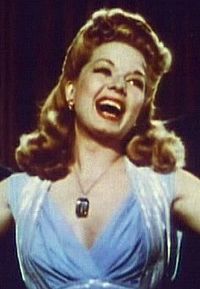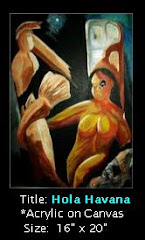If you were to try to pick the most copied, or imitated, movie, radio and TV plot over the years, I suspect two works would come to mind. First, and probably the winner hand's down, is A Christmas Carol, by Charles Dickens.
The second commonest plot, I suspect, would be derived from Richard Connell's 1924 short story, The Most Dangerous Game.
You'd be hard pressed to find any adventure TV show that ran more than one season that didn't place the chief protagonist in the role of the unarmed quarry, pursued through the woods/hills/jungle by a `big game hunter'.
I remember reading the story at about the age of 10, in one of those Alfred Hitchcock Anthology paper backs, and suddenly realizing I'd already seen the same plot a dozen times on TV.
Still, as someone who truly loves to read, it is hard to beat the original story. You can read it online, for free: HERE.
The first movie version of the story would come 8 years after it was published, in 1932, and it would star Joel McCrea as Rainsford and Leslie Banks as Zaroff, along with Fay Wray and Robert Armstrong.

Moviephiles will recognize that two of these actors (Wray & Armstrong)would star in King Kong, released the following year. Although not the huge hit of King Kong, The Most Dangerous Game was reportedly so inexpensive to make, it actually made more money than the big Ape did for RKO.

Fay Wray and Joel McCrea in
The Most Dangerous Game
![[movies]](http://www.archive.org/images/mediatype_movies.gif)
The Most Dangerous Game - David O. Selznick, Merian C. Cooper
Ship wrecked Bob Rainsford (Joel McCrea) crawls ashore on a mysterious island and finds his way to a creepy castle inhabited by a Russian Count named Zaroff (Leslie Banks). There he meets the lovely Eve (Fay Wray) and her drunken brother Martin (Robert Armstrong), who were also ship wrecked. It turns out that the "Game" of the title is the mad Count hunting down and killing human prey.
Over the years, the story was filmed again as:
Plus elements of the storyline would be used in movies like:
- Hard Target
- Gymkata, Predator and Predator 2
- The 1983 James Bond 007 film Octopussy
Among others. As to how many times it has been adapted for television, I doubt anyone has an accurate count. No doubt more than 100 times, though.
The original 1932 film version, however, is probably the best. Certainly better than the 1961 offering below, called Bloodlust!
Fair Warning: I'm not responsible for any brain cells destroyed watching this grade Z film.
![[movies]](http://www.archive.org/images/mediatype_movies.gif)
Bloodlust - Ralph Brooke
Bloodlust! (1961) Director: Ralph Brooke Writers: Ralph Brooke & Richard Connell Tagline: Two beautiful young girls...Defenseless against the deadly ancient crossbow! more Plot Outline: A crazed hunter kidnaps people and turns them loose on his private estate, where he hunts them for sport Wilton Graff : Dr. Albert Balleau Robert Reed : Johnny Randall June Kenney : Betty Scott Joan Lora : Jeanne Perry
Luckily radio gave us several quality adaptations of the story, including two by the long-running anthology show Suspense! and one by Escape!
Suspense ran from 1942 to 1962 on the radio (and in the early days of TV, as an anthology series sponsored by AutoLite). The radio series is particularly well remembered because they were able to attract many big Hollywood stars to perform on the show.
In 1943, Orson Welles starred in an adaptation that moved the focus of the story away from Rainsford (played by Keenan Wynn), and more onto Welles' General Zaroff performance.
430923_The_Most_Dangerous_Game 14 MB
While produced on a lower budget than Suspense!, Escape! consistently produced some of the finest radio drama heard during the late 1940's and early 1950's. Each week, listeners would be beckoned with the voice of Paul Frees or William Conrad saying:
“Tired of the everyday routine? Ever dream of a life of romantic adventure? Want to get away from it all? We offer you... Escape!”
This version of The Most Dangerous Game is, in my opinion, superior to the two from Suspense!.
October 1, 1947. CBS network. "The Most Dangerous Game".
A big game hunt for the biggest game of all...man!
Hans Conried, Irving Ravetch (adaptor), Paul Frees, Richard Connell (writer), William N. Robson (producer), Richard Sanville (director), Cy Feuer (music conceiver, conductor). 1/2 hour.
ESCAPE Most_Dangerous_Game_10-01-47.mp3 3.6 MB
The next time you find yourself watching an adventure story, and somewhere along the way the hero (or heroine) of the story becomes the focus of a `big game hunt', you'll know you are watching a tried and true plot device.
But do yourself a favor: read the story, watch the 1932 film, and listen to the 1947 episode of Escape! if you want to enjoy the best of the versions to date.





























